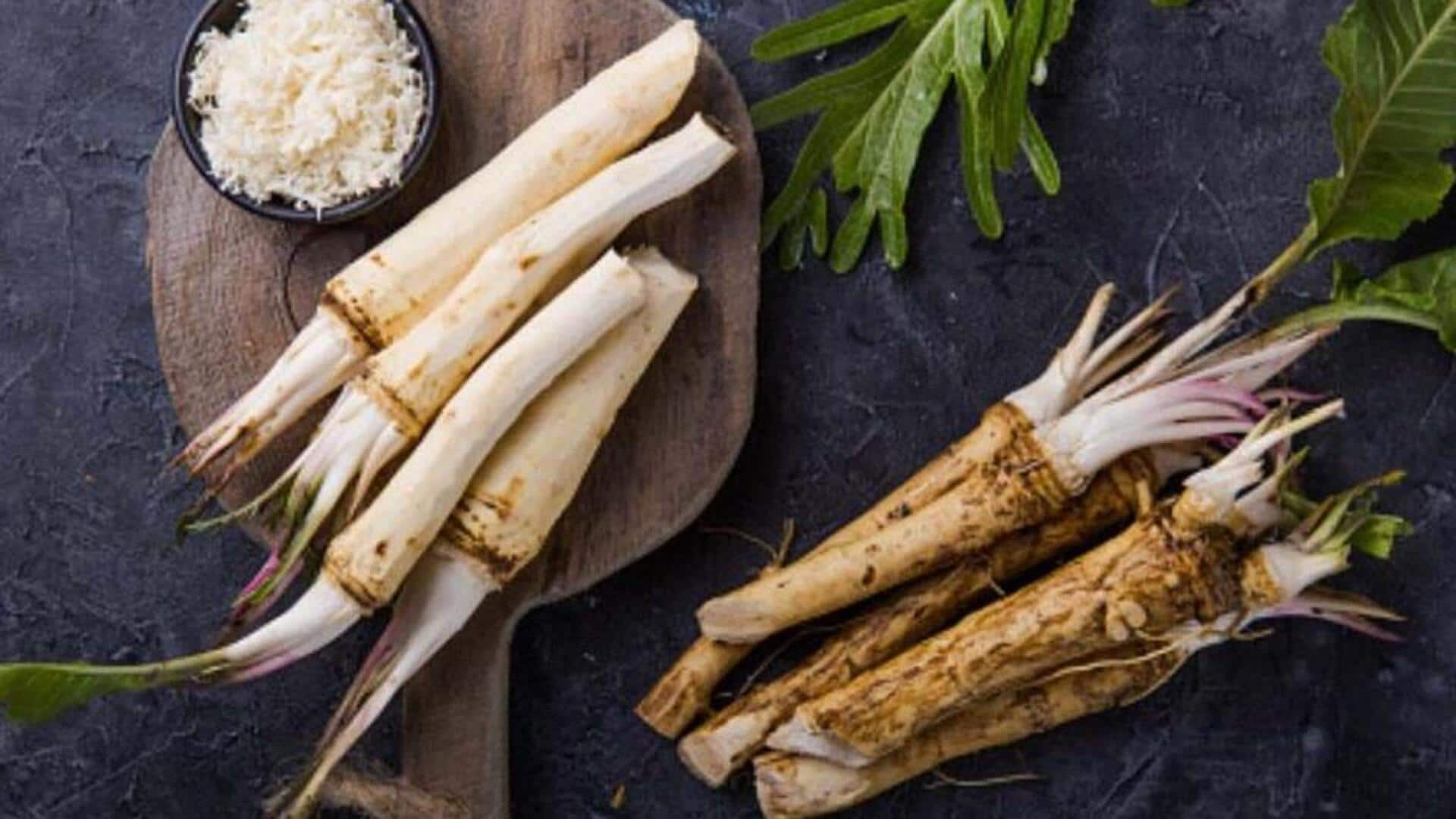
How to cultivate spicy horseradish in tubs
What's the story
Growing your own horseradish is a real treat for fans of its fiery flavor. This article provides a step-by-step guide on how to grow horseradish in outdoor tubs, covering everything from choosing the right container to harvesting your spicy bounty. This hardy perennial can flourish outdoors with little fuss, making it a perfect pick for green thumbs and gardening novices alike.
Container selection
Choosing the right container
Choosing the right container is crucial for growing horseradish. Opt for a tub or large pot with a minimum depth of 15 inches and similar width. It should have sufficient drainage holes to avoid waterlogging and potential root rot. While plastic and wooden containers work well, avoid metal ones as they can alter soil acidity over time.
Soil prep
Preparing the soil and planting
Horseradish loves well-drained, organically rich soil. To create the perfect planting medium, combine garden soil with compost or aged manure in a three-to-one ratio. Fill your container with this mixture, leaving about two inches of space at the top for watering. Plant horseradish crowns or root cuttings at a slight angle, this way they will grow outward and downward.
Watering needs
Watering and feeding your horseradish
Horseradish requires regular watering, particularly during periods of drought. Strive to maintain the soil evenly moist but avoid waterlogging. A deep watering once a week is typically adequate, but adjust according to weather conditions and soil dryness. Feeding the plant with a balanced liquid fertilizer every four weeks will promote robust growth and development.
Pest control
Managing pests and diseases
Horseradish is relatively resistant to pests and diseases, but you should still watch out for common culprits like aphids and fungal diseases, such as white rust. Aphid infestations can be effectively controlled by applying neem oil or insecticidal soap if detected early. To prevent fungal issues, ensure good air circulation around your plants and avoid watering from above to prevent moisture buildup on the leaves.
Harvest time
Harvesting your horseradish crop
Harvest horseradish after the first frost in autumn. The cold temperatures will have concentrated the flavorful oils in the plant. Use a fork or spade to loosen the soil around the plant, then gently lift the roots to prevent damage. Rinse them under running water, pat them dry, and store them in a cool, dark place. You can then use them as and when required.